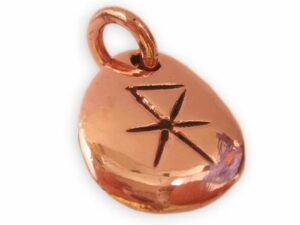Runes
Runes
The oldest characters of the Germanic tribes
We deliver your rune together with a leather strap, loosely knotted. Please tighten the knots at the desired points. A small ring is also included if you would like to wear the rune on one of your jewelry chains. Attach the ring to the eyelet of your rune if necessary.
The term “rune” is derived from a root rūn- (Gothic runa) meaning “secret”. The German words “raunen” and “Geraune” are also related to this. Contrary to the widespread opinion that the name runes is of modern origin, there are several mentions of runa on carved objects from the 6th century (e.g. rune staff of Neudingen). And Venantius Fortunatus, who may have come into contact with runes in the Frankish Merovingian Empire, wrote around 565: Barbara fraxineis pingatur rhuna tabellis / quodque papyrus agit virgula plana valet. (The rune of the barbarians may be drawn on ash tablets; what the papyrus can do, the flat wooden stick can also do. Carmina VII, 18).
The word letter is derived from the beech sticks on which the runes were carved. (Source: Wikipedia). With the rune jewelry, we want to bring this centuries-old mysticism into the present. In the detailed view of the article you will find an explanation of the symbols of the individual runes.
Further runes are in preparation
Information on the production of the runes:
The runes are made from bronze using the “lost casting” technique.
A wax model of the rune is created by hand
This wax model is cast in plaster
The plaster mold is heated
The wax model liquefies and the wax flows out of the mold.
A cavity is created in the plaster mold
This cavity is then filled with liquid bronze
Once the plaster mold has cooled, it is smashed and the cast is then finely sanded and polished
The wax model is lost in this work process, hence the term “lost casting”. No two runes are the same.
Showing the single result




